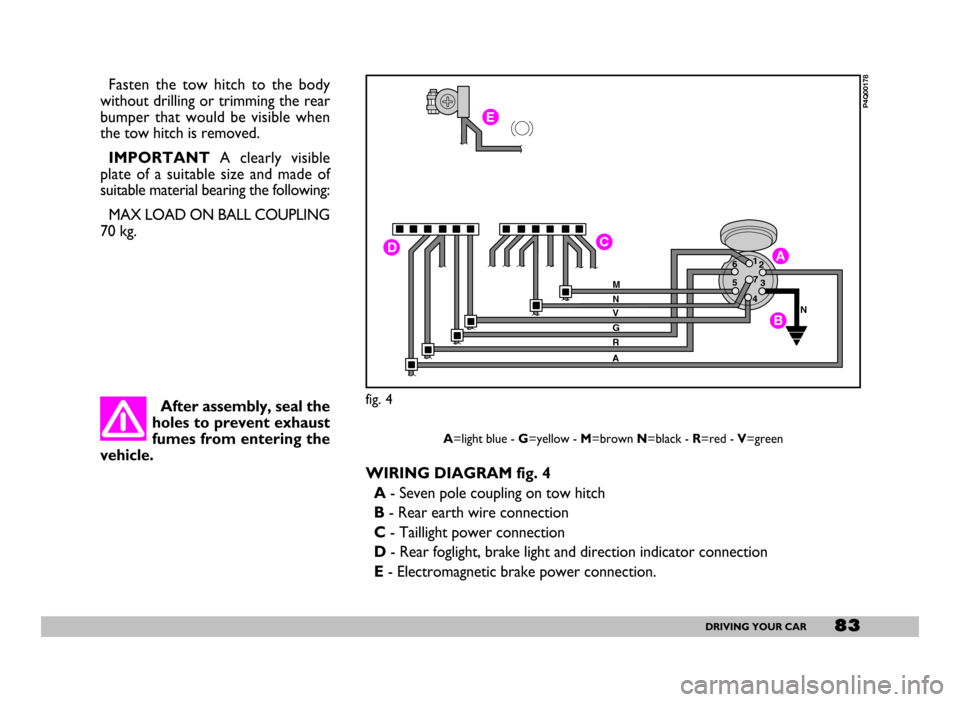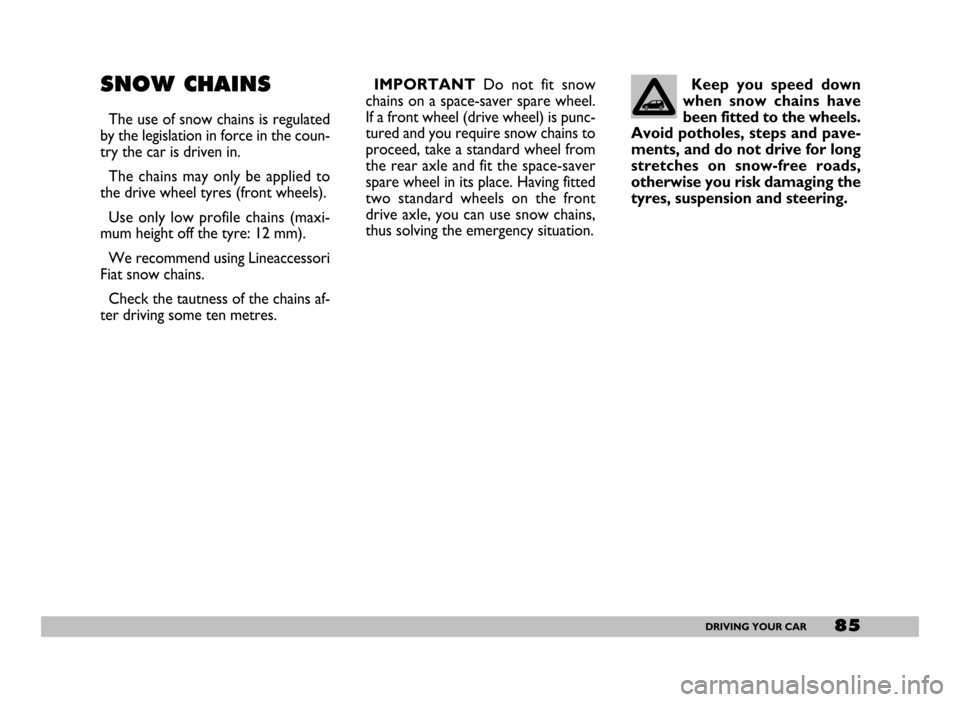Page 81 of 154

80DRIVING YOUR CAR
LOOKING AFTER EMISSION
CONTROL DEVICES
The correct use of pollution control
devices not only ensures respect for
the environment but also has an effect
on the car’s performance. Keeping
these devices in good condition is
therefore a fundamental rule for dri-
ving that is easy on your pocket and
on the environment too.
The first step to take is to follow the
Service Schedule to the letter.
If your car has a petrol engine use
only unleaded petrol.
If you have trouble starting, do not
keep turning the ignition key for long
periods. Be especially careful to avoid
bump starting the car by pushing, tow-
ing or rolling down hill: these are all
manoeuvres that can damage the cat-
alytic exhaust. For emergency starts
use only an auxiliary battery.If the engine begins to “lose its
smoothness” when travelling, con-
tinue your journey but reduce the de-
mands you are making on the engine
and go to a Fiat Dealershipas soon
as you can.
When the instrument panel fuel re-
serve warning light comes on, fill up as
soon as possible. A low level of fuel
can cause an uneven supply of fuel to
the engine with the inevitable increase
in the temperature of the exhaust gas
and serious damage to the catalytic
converter.
Never run the engine with one or
more spark plugs disconnected, even
for testing purposes.
Do not warm up the engine by let-
ting it idle for a while before moving
off unless the outside temperature is
very low and, even in this case, only
do so for less than 30 seconds.Do not install other heat shields
and do not remove those already fit-
ted to the catalytic converter and
exhaust pipe.
When functioning nor-
mally the catalytic con-
verter reaches high tem-
peratures. For this reason do not
park the car over flammable ma-
terial (grass, dry leaves, pine nee-
dles etc.): fire hazard.
Ignoring the above rules
may lead to fire.
Do not allow anything to
be sprayed onto the cat-
alytic converter, Lambda
sensor or exhaust pipe.
Page 82 of 154
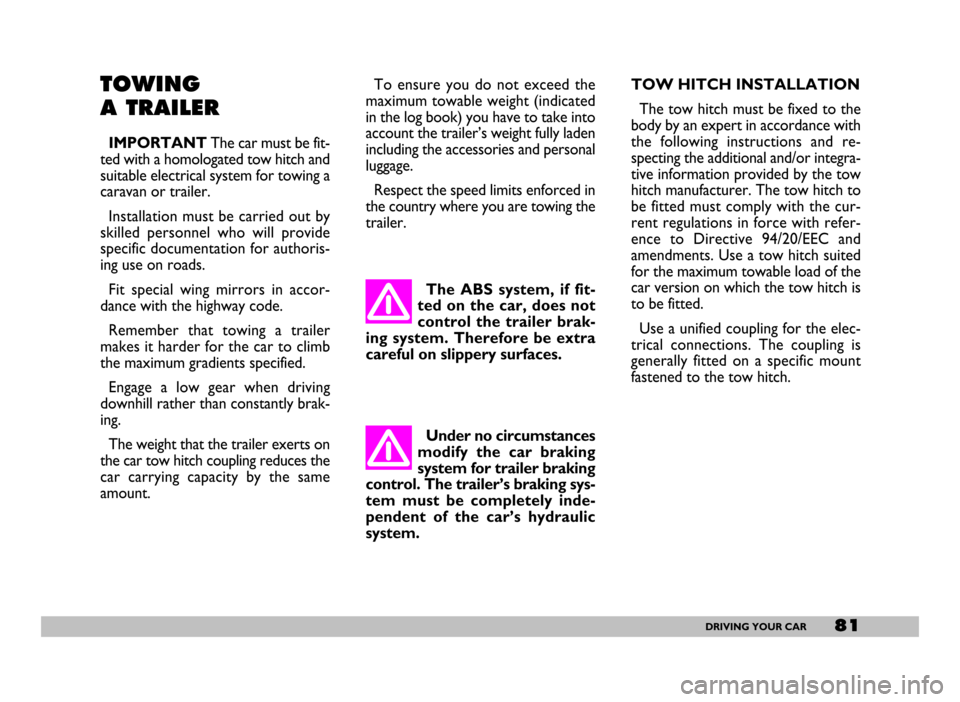
81DRIVING YOUR CAR
TOWING
A TRAILER
IMPORTANTThe car must be fit-
ted with a homologated tow hitch and
suitable electrical system for towing a
caravan or trailer.
Installation must be carried out by
skilled personnel who will provide
specific documentation for authoris-
ing use on roads.
Fit special wing mirrors in accor-
dance with the highway code.
Remember that towing a trailer
makes it harder for the car to climb
the maximum gradients specified.
Engage a low gear when driving
downhill rather than constantly brak-
ing.
The weight that the trailer exerts on
the car tow hitch coupling reduces the
car carrying capacity by the same
amount. To ensure you do not exceed the
maximum towable weight (indicated
in the log book) you have to take into
account the trailer’s weight fully laden
including the accessories and personal
luggage.
Respect the speed limits enforced in
the country where you are towing the
trailer.TOW HITCH INSTALLATION
The tow hitch must be fixed to the
body by an expert in accordance with
the following instructions and re-
specting the additional and/or integra-
tive information provided by the tow
hitch manufacturer. The tow hitch to
be fitted must comply with the cur-
rent regulations in force with refer-
ence to Directive 94/20/EEC and
amendments. Use a tow hitch suited
for the maximum towable load of the
car version on which the tow hitch is
to be fitted.
Use a unified coupling for the elec-
trical connections. The coupling is
generally fitted on a specific mount
fastened to the tow hitch. The ABS system, if fit-
ted on the car, does not
control the trailer brak-
ing system. Therefore be extra
careful on slippery surfaces.
Under no circumstances
modify the car braking
system for trailer braking
control. The trailer’s braking sys-
tem must be completely inde-
pendent of the car’s hydraulic
system.
Page 83 of 154
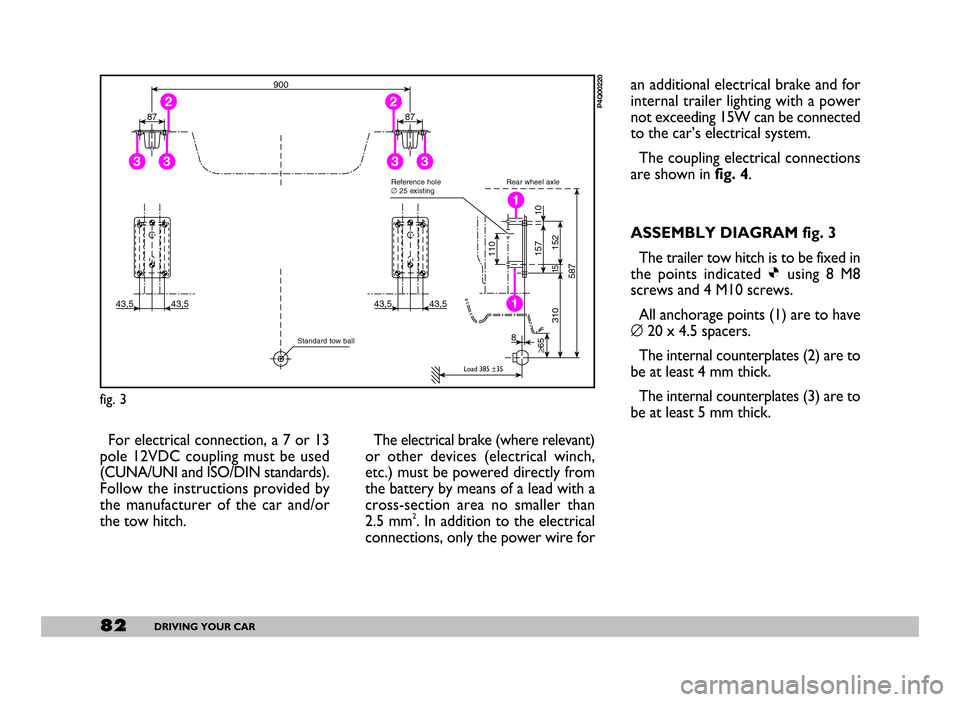
82DRIVING YOUR CAR
For electrical connection, a 7 or 13
pole 12VDC coupling must be used
(CUNA/UNI and ISO/DIN standards).
Follow the instructions provided by
the manufacturer of the car and/or
the tow hitch.The electrical brake (where relevant)
or other devices (electrical winch,
etc.) must be powered directly from
the battery by means of a lead with a
cross-section area no smaller than
2.5 mm
2. In addition to the electrical
connections, only the power wire foran additional electrical brake and for
internal trailer lighting with a power
not exceeding 15W can be connected
to the car’s electrical system.
The coupling electrical connections
are shown in fig. 4.
ASSEMBLY DIAGRAM fig. 3
The trailer tow hitch is to be fixed in
the points indicated Øusing 8 M8
screws and 4 M10 screws.
All anchorage points (1) are to have
∅20 x 4.5 spacers.
The internal counterplates (2) are to
be at least 4 mm thick.
The internal counterplates (3) are to
be at least 5 mm thick.
43,543,5
15
≥65
3108
152
587
110
10 157
43,543,5
1
1
87
33
287
33
2
900
fig. 3
P4Q00220
Rear wheel axle
Load 385 ±35
Reference hole
∅25 existing
Standard tow ball
Page 84 of 154
83DRIVING YOUR CAR
Fasten the tow hitch to the body
without drilling or trimming the rear
bumper that would be visible when
the tow hitch is removed.
IMPORTANT A clearly visible
plate of a suitable size and made of
suitable material bearing the following:
MAX LOAD ON BALL COUPLING
70 kg.
After assembly, seal the
holes to prevent exhaust
fumes from entering the
vehicle.
E
DCA
B
1
2
3
4 5 6
7
M
N
V
G
R
AN
fig. 4
P4Q00178
A=light blue - G=yellow - M=brown N=black - R=red - V=green
WIRING DIAGRAM fig. 4
A- Seven pole coupling on tow hitch
B- Rear earth wire connection
C- Taillight power connection
D- Rear foglight, brake light and direction indicator connection
E- Electromagnetic brake power connection.
Page 85 of 154

84DRIVING YOUR CAR
WINTER TYRES
These are tyres which have been
specifically designed for use on snow
and ice and should be fitted in place of
the existing tyres.
Use winter tyres of the same size as
the tyres provided with the car.
Fiat Dealerships will be glad to of-
fer advice on the right type of tyres
according to your needs.
For information on the tyres to be
fitted, inflation pressure and winter
tyre specifications, follow the pre-
scriptions given in
WHEELS, TECHNICAL
SPECIFICATIONS
.The performance of winter tyres is
greatly reduced when the depth of the
tread is less than 4 mm. In this situa-
tion it would be safer to have them
replaced.
The specific characteristics of the
winter tyres mean that under normal
driving conditions or when driving
long distances on motorways, their
performance is greatly reduced in
comparison to those normally fitted
to the car.
The use of these tyres should there-
fore be limited to the conditions for
which they were designed.
IMPORTANTWhen using winter
tyres with a maximum speed rating
lower than the speed which can be
reached by the car (plus 5%), place a
suitable notice is the passenger com-
partment to inform the driver of the
top speed which the winter tyre can
run at (as per EC Directive).All four tyres should be the same
(brand and track) to ensure greater
safety when driving, braking and cor-
nering.
Remember not to invert the tyre di-
rection of rotation.
The maximum speed
for winter tyres with “Q”
marking is 160 km/h. Re-
spect the highway code speed
limits.
Page 86 of 154
85DRIVING YOUR CAR
SNOW CHAINS
The use of snow chains is regulated
by the legislation in force in the coun-
try the car is driven in.
The chains may only be applied to
the drive wheel tyres (front wheels).
Use only low profile chains (maxi-
mum height off the tyre: 12 mm).
We recommend using Lineaccessori
Fiat snow chains.
Check the tautness of the chains af-
ter driving some ten metres.Keep you speed down
when snow chains have
been fitted to the wheels.
Avoid potholes, steps and pave-
ments, and do not drive for long
stretches on snow-free roads,
otherwise you risk damaging the
tyres, suspension and steering.
IMPORTANTDo not fit snow
chains on a space-saver spare wheel.
If a front wheel (drive wheel) is punc-
tured and you require snow chains to
proceed, take a standard wheel from
the rear axle and fit the space-saver
spare wheel in its place. Having fitted
two standard wheels on the front
drive axle, you can use snow chains,
thus solving the emergency situation.
Page 87 of 154

86DRIVING YOUR CAR
STORING THE CAR
The following precautions should be
taken if the car will not be used for
several months:
– Park the car in covered, dry and if
possible well-ventilated premises.
– Engage a gear.
– Make sure the handbrake is not
engaged.
– Remove the cables from the bat-
tery terminals (first remove the cable
to the negative terminal), and check
the battery charge. If the car is to be
stored for long periods the charge of
the battery should be checked every
month and recharged if it falls below
12.5V.– Clean and protect the shiny metal
parts using special compounds readily
available.
– Sprinkle talcum powder on the
rubber windscreen and rear window
wiper blades and lift them off the glass.
– Open the windows slightly.– Cover the car with a cloth or per-
forated plastic sheet. Do not use
sheets of non-perforated plastic as
they do not allow moisture on the car
body to evaporate.
– Inflate the tyres to + 0.5 bar above
the normal specified pressure and
check it at intervals.
– Do not drain the engine cooling
system.
Page 88 of 154

87IN AN EMERGENCY
I I I I
N N N N
A A A A
N N N N
E E E E
M M M M
E E E E
R R R R
G G G G
E E E E
N N N N
C C C C
Y Y Y Y
EMERGENCY
START-UP
If the Fiat CODE cannot deactivate
the engine immobilising system, the
¢and
Uwarning lights stay on and
the engine will not start. Follow the
emergency start-up procedure to
start the engine.
Read the whole procedure care-
fully before trying to carry it out.
If you make a mistake, you must turn
the ignition key back to STOPand
repeat the whole operation from the
beginning (step 1).
1)Read the 5-figure electronic code
given on the CODE card.
2)Turn the ignition key to MAR.3)Press and hold down the acceler-
ator pedal. The injection system warn-
ing light
Uwill come on for about 8
seconds, and then go out. At this
point release the accelerator pedal
and get ready to count the flashes of
warning light
U.
4) Count the number of flashes that
corresponds to the first figure of the
code on the CODE card, then press
the accelerator pedal and keep it there
until the
Uwarning light comes on
for four seconds and then goes out;
release the accelerator pedal.
5) The
Uwarning light will start
flashing again: after it has flashed the
number of times that corresponds to
the second figure on the CODE card,
press the accelerator pedal to the
floor and keep it there.
6) Do the same for the remaining
figures on the CODE card. 7) Once the final figure has been en-
tered, keep the accelerator pedal
pressed. The injection warning light
Uwill light up for four seconds and
then go out; release the accelerator
pedal.
8)The
Uwarning light will flash
rapidly for about 4 seconds to indicate
that the operation has been com-
pleted correctly.
9) Start the engine by turning the ig-
nition key from MARto AVV.
If, however, the
Uwarning light
stays on, turn the ignition key to
STOPand repeat the procedure
from step 1.
IMPORTANTAfter an emergency
start, you should contact a Fiat Deal-
ership, otherwise you will have to re-
peat the procedure described each
time you want to start the engine.
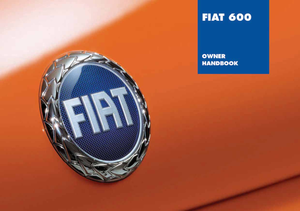 1
1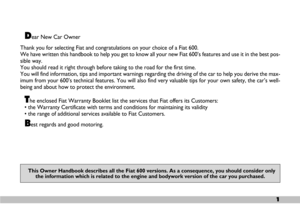 2
2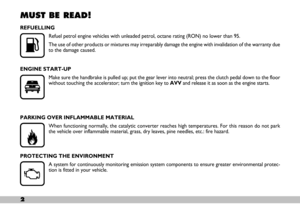 3
3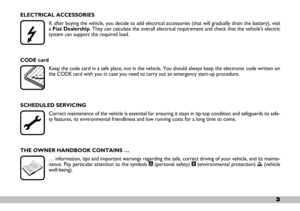 4
4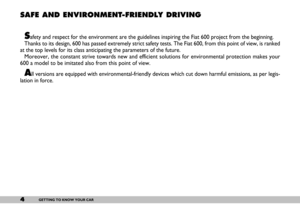 5
5 6
6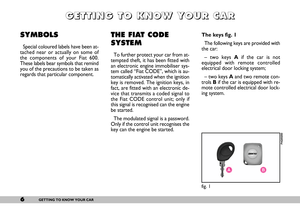 7
7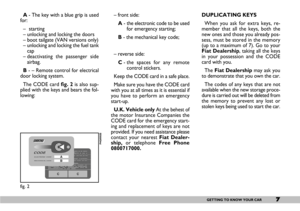 8
8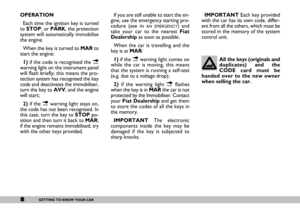 9
9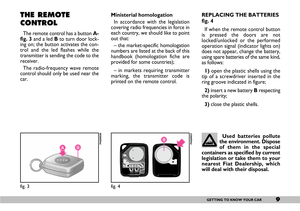 10
10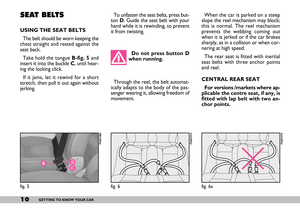 11
11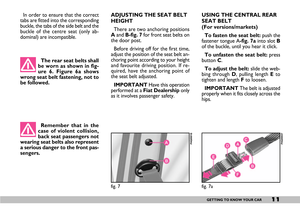 12
12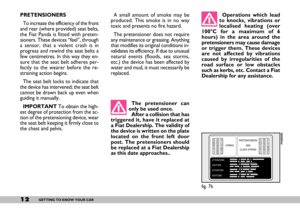 13
13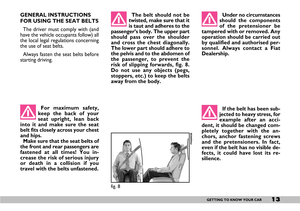 14
14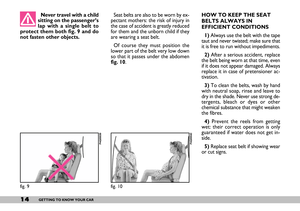 15
15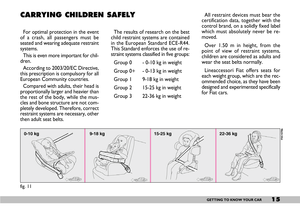 16
16 17
17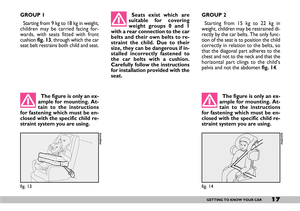 18
18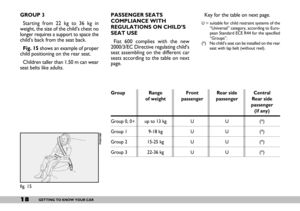 19
19 20
20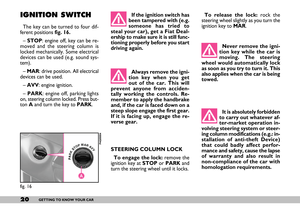 21
21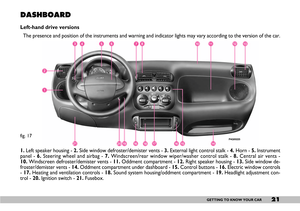 22
22 23
23 24
24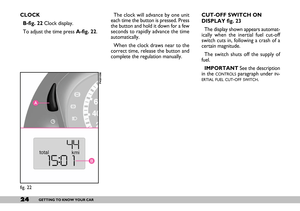 25
25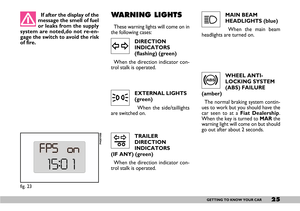 26
26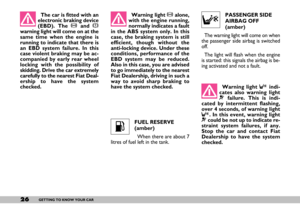 27
27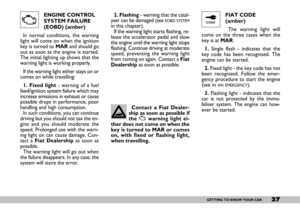 28
28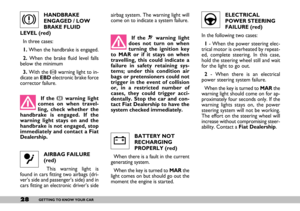 29
29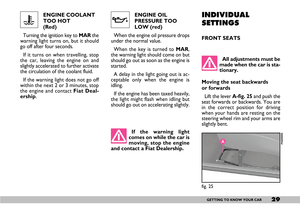 30
30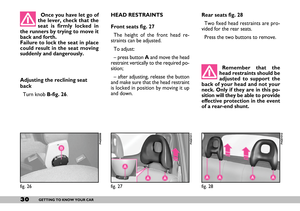 31
31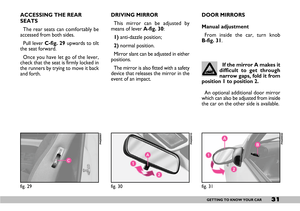 32
32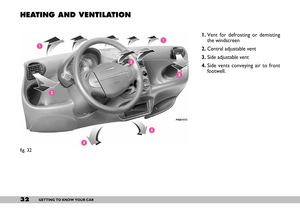 33
33 34
34 35
35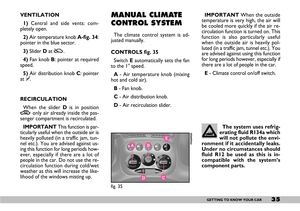 36
36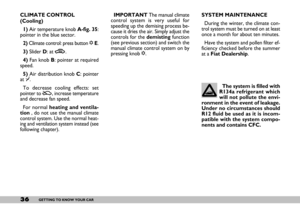 37
37 38
38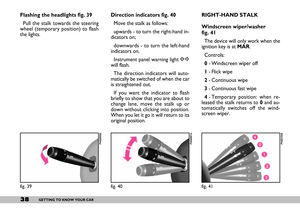 39
39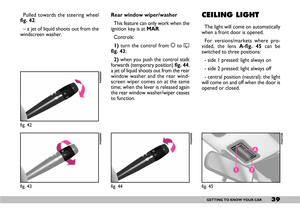 40
40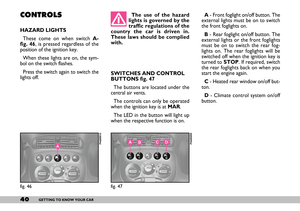 41
41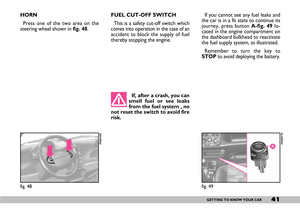 42
42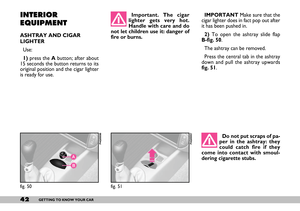 43
43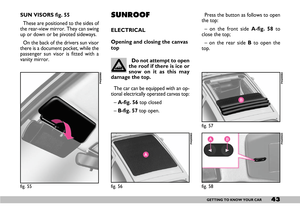 44
44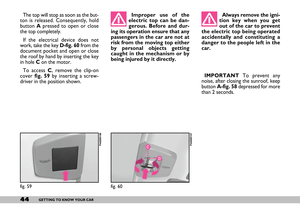 45
45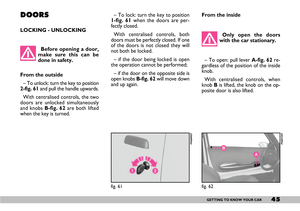 46
46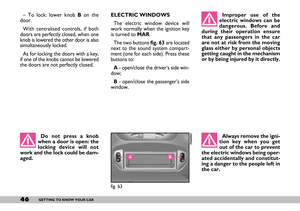 47
47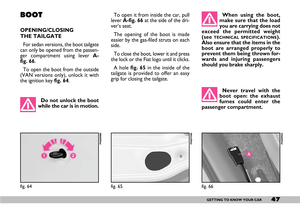 48
48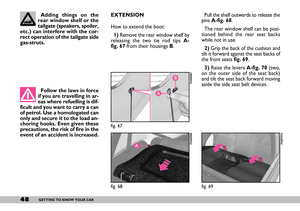 49
49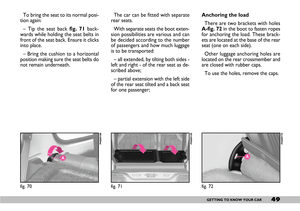 50
50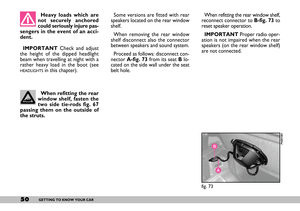 51
51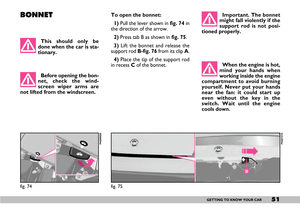 52
52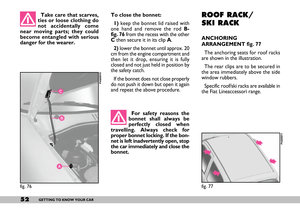 53
53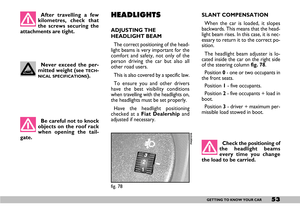 54
54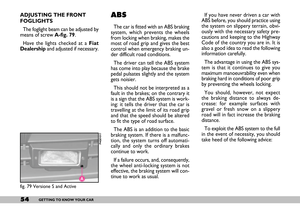 55
55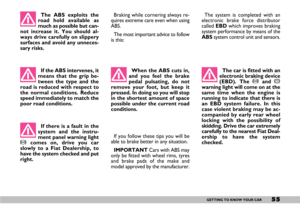 56
56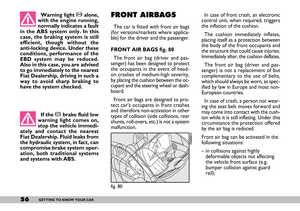 57
57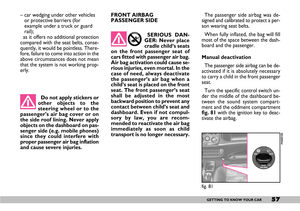 58
58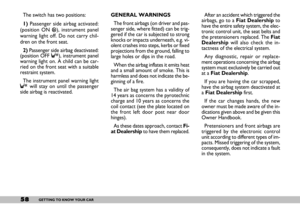 59
59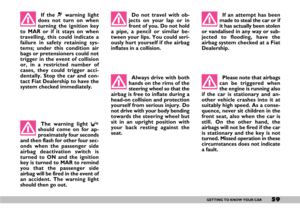 60
60 61
61 62
62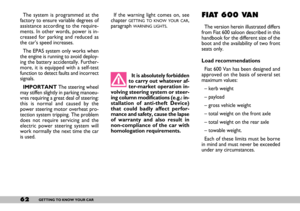 63
63 64
64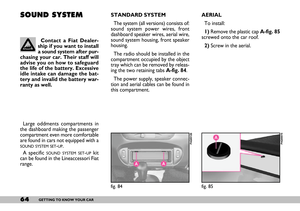 65
65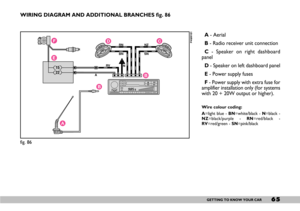 66
66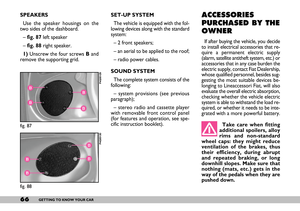 67
67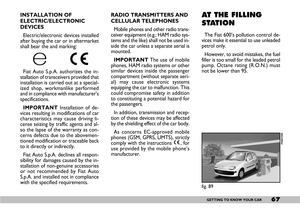 68
68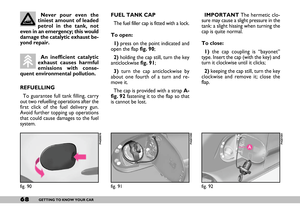 69
69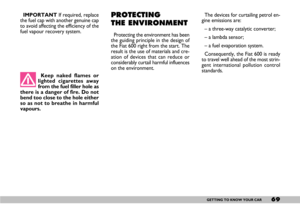 70
70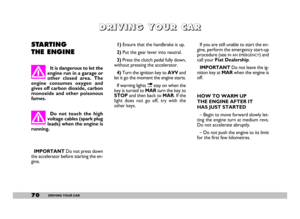 71
71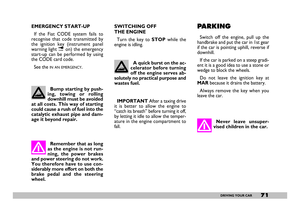 72
72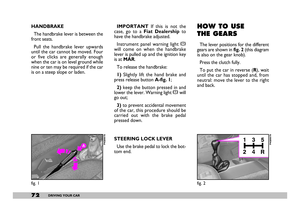 73
73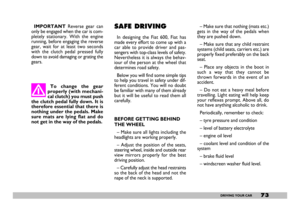 74
74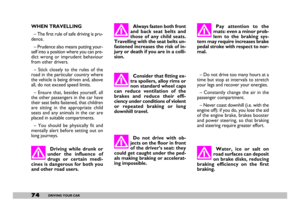 75
75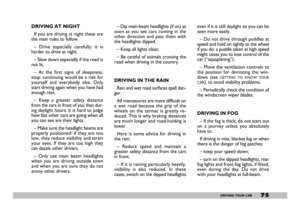 76
76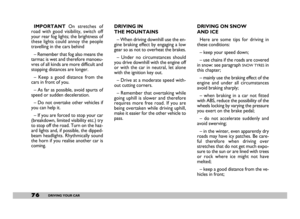 77
77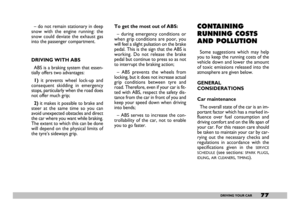 78
78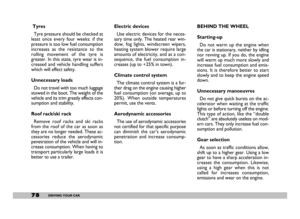 79
79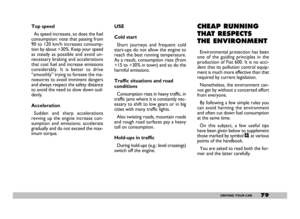 80
80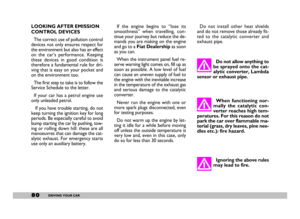 81
81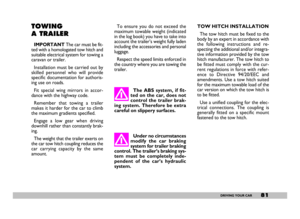 82
82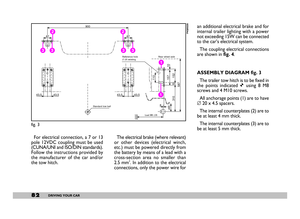 83
83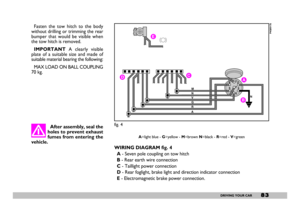 84
84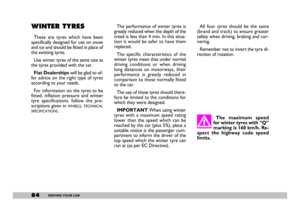 85
85 86
86 87
87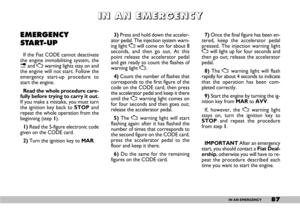 88
88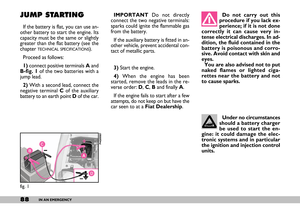 89
89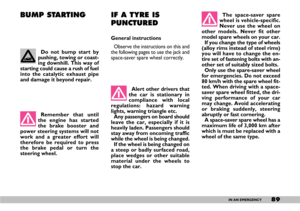 90
90 91
91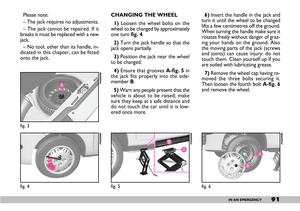 92
92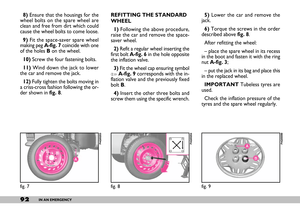 93
93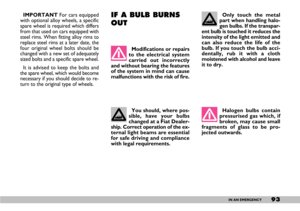 94
94 95
95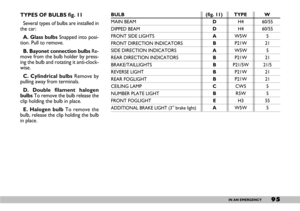 96
96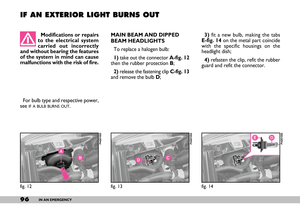 97
97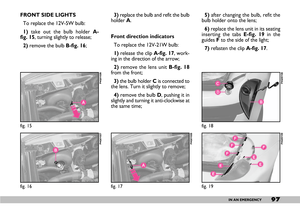 98
98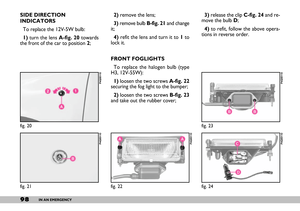 99
99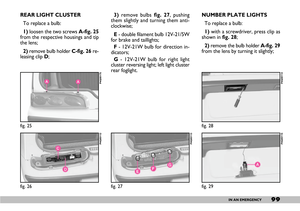 100
100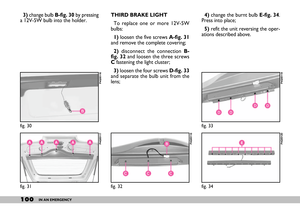 101
101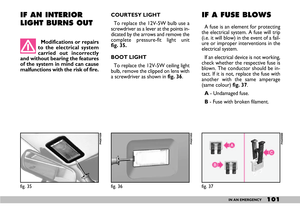 102
102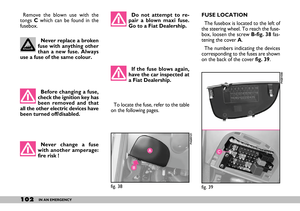 103
103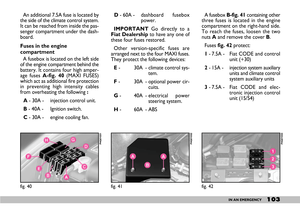 104
104 105
105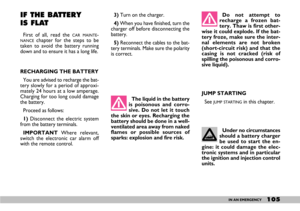 106
106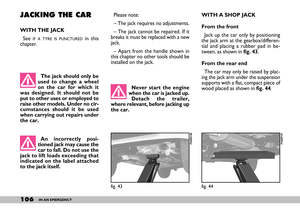 107
107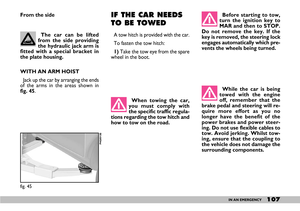 108
108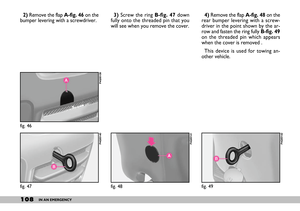 109
109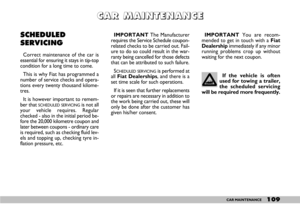 110
110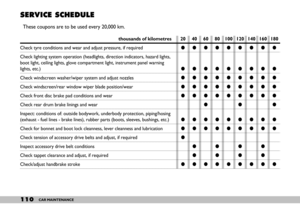 111
111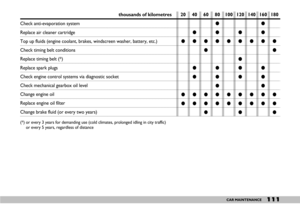 112
112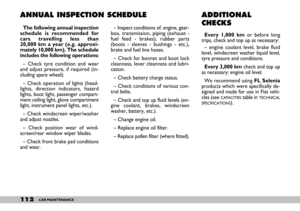 113
113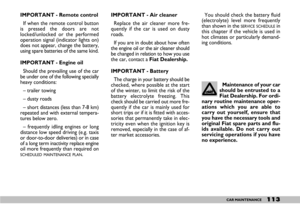 114
114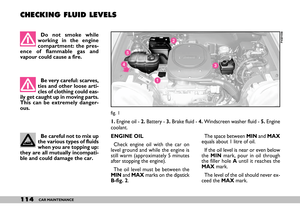 115
115 116
116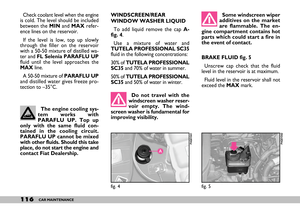 117
117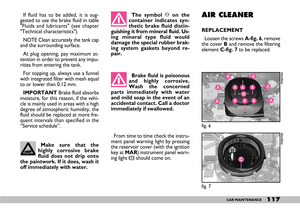 118
118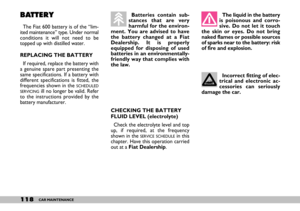 119
119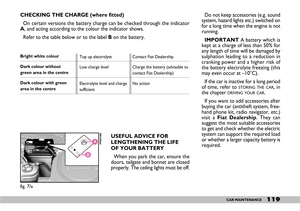 120
120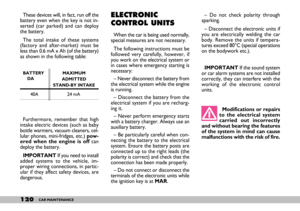 121
121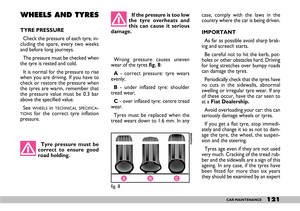 122
122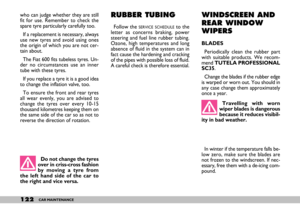 123
123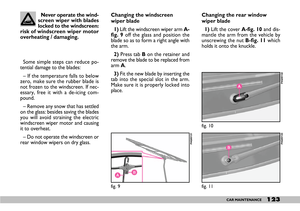 124
124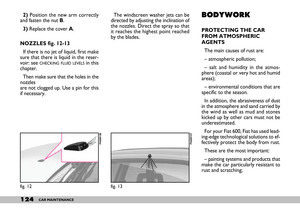 125
125 126
126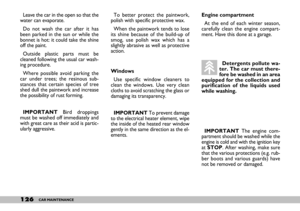 127
127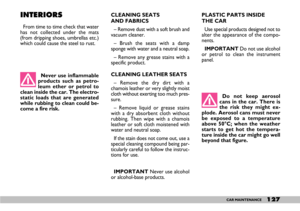 128
128 129
129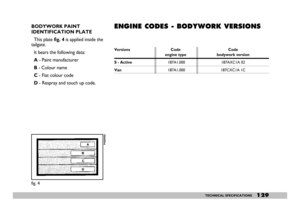 130
130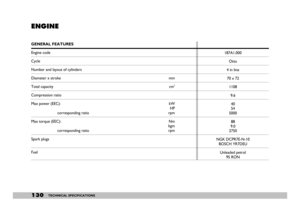 131
131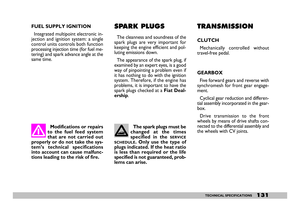 132
132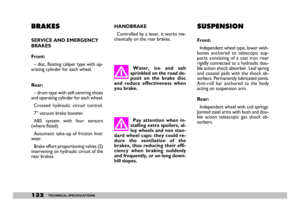 133
133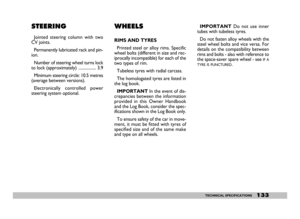 134
134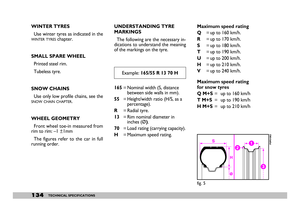 135
135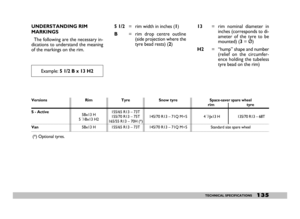 136
136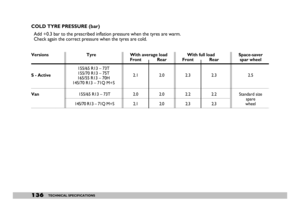 137
137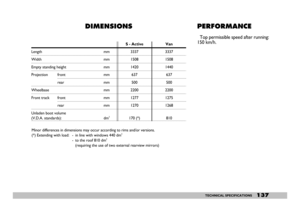 138
138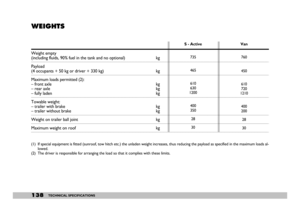 139
139 140
140 141
141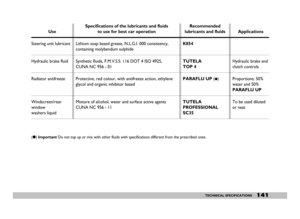 142
142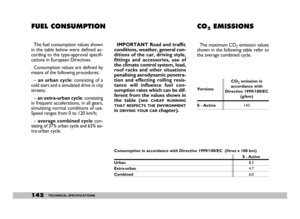 143
143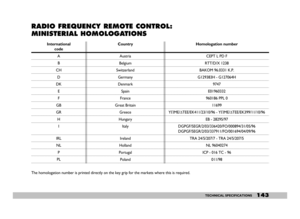 144
144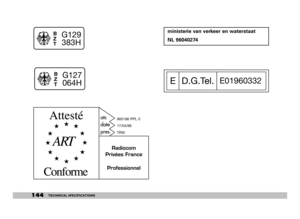 145
145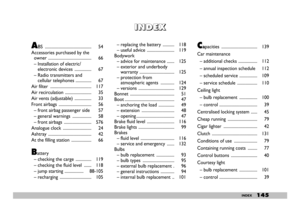 146
146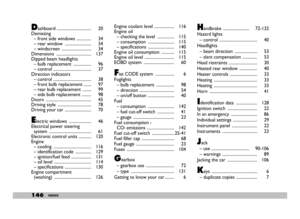 147
147 148
148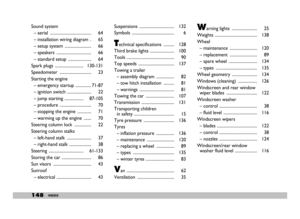 149
149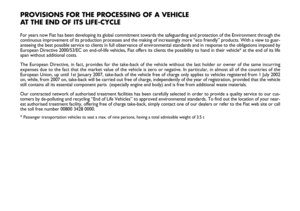 150
150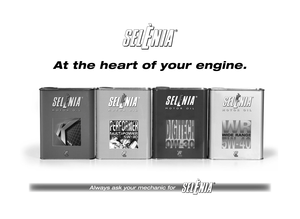 151
151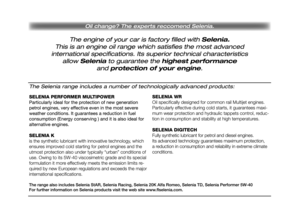 152
152 153
153


